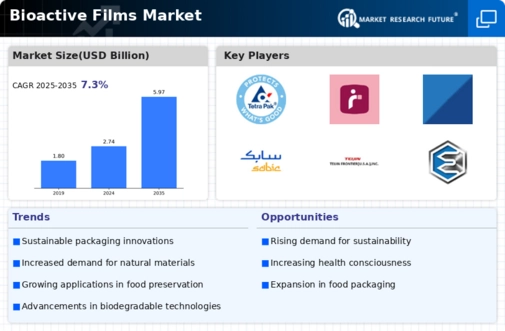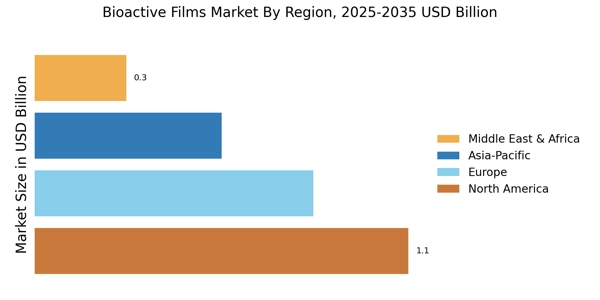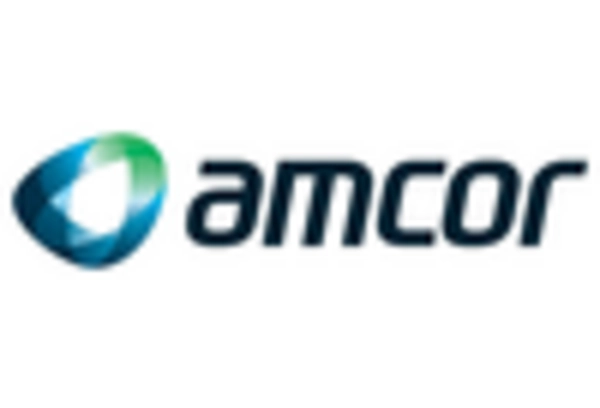The Bioactive Films Market is currently characterized by a dynamic competitive landscape, driven by increasing consumer demand for sustainable packaging solutions and advancements in material science. Key players such as BASF SE (Germany), DuPont de Nemours Inc (US), and Amcor plc (Australia) are at the forefront of this evolution, each adopting distinct strategies to enhance their market positioning. BASF SE (Germany) focuses on innovation in bio-based materials, while DuPont de Nemours Inc (US) emphasizes partnerships with food manufacturers to develop tailored solutions. Amcor plc (Australia) is actively pursuing regional expansion, particularly in emerging markets, to capitalize on the growing demand for eco-friendly packaging. Collectively, these strategies contribute to a competitive environment that is increasingly oriented towards sustainability and technological advancement.
In terms of business tactics, companies are localizing manufacturing to reduce carbon footprints and optimize supply chains. The Bioactive Films Market appears moderately fragmented, with a mix of established players and emerging startups. This structure allows for a diverse range of products and innovations, although the influence of key players remains substantial. The collective actions of these companies shape market dynamics, as they strive to meet regulatory requirements and consumer preferences for sustainable options.
In August 2025, BASF SE (Germany) announced the launch of a new line of biodegradable films designed for food packaging applications. This strategic move underscores the company's commitment to sustainability and positions it to capture a larger share of the eco-conscious consumer market. The introduction of these films is likely to enhance BASF's competitive edge, as it aligns with the growing trend towards environmentally friendly packaging solutions.
In September 2025, DuPont de Nemours Inc (US) entered into a collaboration with a leading food processing company to develop bioactive films that extend the shelf life of perishable goods. This partnership not only showcases DuPont's innovative capabilities but also highlights the increasing importance of collaboration in addressing specific market needs. By leveraging its technological expertise, DuPont is poised to strengthen its market presence and drive growth in the bioactive films sector.
In July 2025, Amcor plc (Australia) completed the acquisition of a regional packaging firm specializing in bioactive films. This acquisition is indicative of Amcor's strategy to enhance its product portfolio and expand its operational footprint in key markets. By integrating this new capability, Amcor is likely to improve its competitive positioning and respond more effectively to the rising demand for sustainable packaging solutions.
As of October 2025, the Bioactive Films Market is witnessing trends such as digitalization, sustainability, and the integration of artificial intelligence in production processes. Strategic alliances are increasingly shaping the competitive landscape, enabling companies to pool resources and expertise. Looking ahead, it is anticipated that competitive differentiation will evolve, with a shift from price-based competition to a focus on innovation, technology, and supply chain reliability. This transition may redefine how companies engage with consumers and respond to market demands.


















Leave a Comment